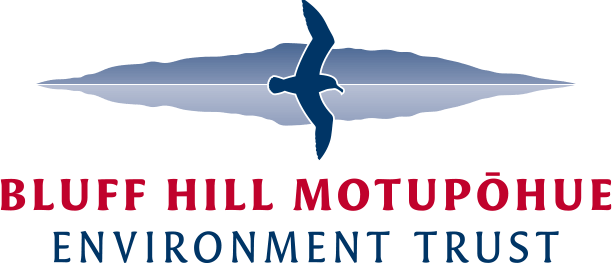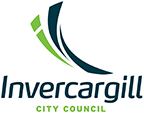Conservation Week was 5-11 September 2022. BHMET set out an ambitious target: to put 20,000 native plants into the ground during the week. With the help of corporate and individual volunteers, we… Read more
About Motupōhue
Follow State Highway One as far south as you can go and you’ll get to the township of Bluff, a maritime settlement nestled onto the slopes of Motupōhue - a 265m hill connected to the mainland by a 300m wide isthmus at Ocean Beach.
Motupōhue is te taurapa (the sternpost) of te waka o Aoraki (the South Island). Te taurapa is where the chiefs stand on the waka and Ngāi Tahu oral tradition is that many chiefs are buried on the hill. This special place has Tōpuni status - recognised in the Ngāi Tahu treaty settlement act of 1998.
When the first waka rounded Motupōhue to enter what is now Bluff Harbour, the hill was covered in centuries-old podocarps. Birds ruled the forest. Moa, Kiwi and Kākāpō would have roamed the forest floor with Haast Eagles soaring overhead. Tītī and penguins would have nested far into the forest. Seals and whales would have been prolific.
The first European ship arrived in Bluff in 1813 with permanent settlement occuring by the mid-19th century. Sadly, that settlement saw the decimation of the seal and whale population from the area and the clearance of the podocarp forest that covered the whole of the peninsula from Motupōhue to Omaui. One small remnant of this forest remained - possibly protected after the England’s Glory wreck in 1881 because the survivors found shelter in the forest as they made their way to Bluff.
Fast forward to the mid-20th century and Motupōhue was a denuded hill with low-producing sheep paddock covering most of the hill and the first generation of pine plantation on the northern slopes. That one small podocarp remnant clung on providing shelter for native birds.
By 2008, predators were out of control in the forest. Possums had killed all the tōtara and mustelids, rats and feral cats had reduced bird numbers to the point where the forest had fallen silent. Something had to be done and the Bluff Hill Motupōhue Environment Trust was formed to restore native habitat.
Today, Motupōhue is a healing hill and is one of the last populated places in New Zealand where the forest meets the sea providing food and shelter to marine and land animals.
The hill is very well used by walkers, runners and mountain bikers on the extensive walking tracks and the only downhill mountain bike tracks in easy reach of Invercargill. The stunning coastline is valued by divers and shore fishermen alike for its rugged beauty, kai moana and easy access (via the walking tracks).
Pest control on Motupōhue
The geographical layout of Bluff with its narrow land bridge makes pest control ecologically sustainable, cost effective and, most of all, achievable. There are few remnants of coastal Podocarp / Kāmahi / Rātā forest left on the mainland and few as accessible and popular as Motupōhue. Bluff Hill is one of the few populated places where the forest meets the sea providing food and shelter to marine and land animals. Motupōhue is home to declining, at-risk, nationally vulnerable and endangered birds species: blackbacked gull; several species of penguin such as kororā (little blue), hōiho (yellow-eyed), and tawaki (fiordland crested); mapo (foveaux shag); mainland tītī (sooty shearwater); kākāriki (red-crowned parakeet; tītitipounamu (south island rifleman), mātātā (fernbird), kākā and kererū (NZ pigeon).
Visitors come through Bluff on their way to Rakiura; many stay and explore the historical sights, walk the tracks and admire the views. As proud Bluff residents we want our visitors and our future generations to enjoy the uniqueness of Motupōhue as it should be: a thriving ecosystem abundant with native plants and animals and with as few introduced predators as possible. A predator-controlled environment on Motupōhue provides a link in the conservation corridor between Rakiura, Ruapuke Island, Omaui, Otatara, Mores Reserve and Fiordland.




